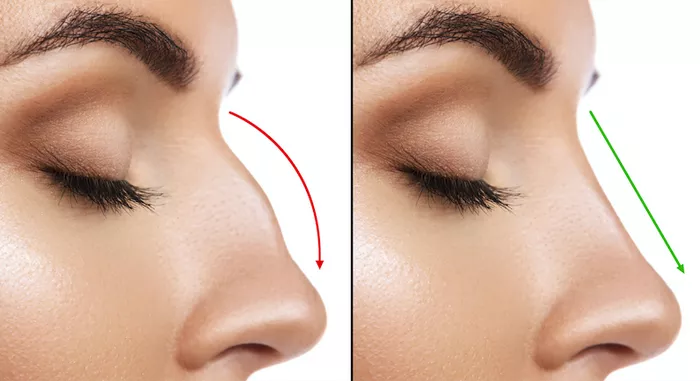Introduction:
Rhinoplasty is a popular cosmetic surgery that is used to reshape the nose. There are several types of rhinoplasty, each with its own unique benefits and risks. Choosing the right type of rhinoplasty can be a difficult decision, as it depends on several factors, including the individual’s goals, the surgeon’s experience, and the individual’s anatomy. In this article, we will explore the different types of rhinoplasty and their associated benefits and risks to help you make an informed decision about which rhinoplasty is best for you.
Open Rhinoplasty:
Open rhinoplasty is a type of rhinoplasty that involves making an incision on the columella, the tissue that separates the nostrils. This allows the surgeon to lift the skin and access the underlying structures of the nose. Open rhinoplasty is often used for more complex cases, as it provides greater visibility and control during the surgery. The benefits of open rhinoplasty include the ability to make more precise changes to the nose, the ability to correct more severe deformities, and the ability to achieve more predictable results. However, open rhinoplasty does have a longer recovery time and a higher risk of visible scarring.
Closed Rhinoplasty:
Closed rhinoplasty is a type of rhinoplasty that involves making incisions inside the nostrils, without any external incisions. This allows the surgeon to access the underlying structures of the nose without lifting the skin. Closed rhinoplasty is often used for simpler cases, as it provides less visibility and control during the surgery. The benefits of closed rhinoplasty include a shorter recovery time, less visible scarring, and a lower risk of complications. However, closed rhinoplasty may not be suitable for more complex cases, as it provides less visibility and control during the surgery.
Revision Rhinoplasty:
Revision rhinoplasty is a type of rhinoplasty that is performed to correct the results of a previous rhinoplasty. Revision rhinoplasty can be more complex than primary rhinoplasty, as it involves working with scar tissue and altered anatomy. The benefits of revision rhinoplasty include the ability to correct unsatisfactory results from a previous surgery and the ability to achieve a more natural-looking nose. However, revision rhinoplasty can be more challenging than primary rhinoplasty, and it may require a more experienced surgeon.
Non-Surgical Rhinoplasty:
Non-surgical rhinoplasty, also known as liquid rhinoplasty, is a non-invasive procedure that uses dermal fillers to reshape the nose. Non-surgical rhinoplasty is a good option for those who want to make minor changes to the nose without undergoing surgery. The benefits of non-surgical rhinoplasty include a shorter recovery time, less risk of complications, and the ability to achieve natural-looking results. However, non-surgical rhinoplasty is not suitable for more complex cases, as it cannot correct structural problems in the nose.
Choosing the Right Rhinoplasty:
Choosing the right rhinoplasty depends on several factors, including the individual’s goals, the surgeon’s experience and expertise, and the individual’s anatomy. Open rhinoplasty is a good option for those who want to make more precise changes to the nose or correct more severe deformities. Closed rhinoplasty is a good option for those who want a shorter recovery time and less visible scarring. Revision rhinoplasty is a good option for those who want to correct unsatisfactory results from a previous surgery. Non-surgical rhinoplasty is a good option for those who want to make minor changes to the nose without undergoing surgery.
Conclusion:
Which rhinoplasty is best depends on several factors, including the individual’s goals, the surgeon’s experience and expertise, and the individual’s anatomy. Open rhinoplasty, closed rhinoplasty, revision rhinoplasty, and non-surgical rhinoplasty are all options for those considering rhinoplasty. It’s important to choose a qualified and experienced surgeon who can help you choose the right type of rhinoplasty for your individual needs and minimize the risks and complications associated with the procedure. With the right surgeon and the right type of rhinoplasty, you can achieve the nose you’ve always wanted.


